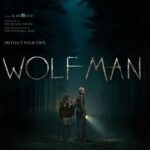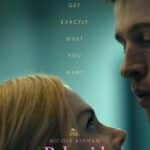
Oppenheimer
It is 1926, J. Robert Oppenheimer is a young physics student at the University of Cambridge and is so obsessed with listening to the lecture of guest professor Niels Bohr that, out of spite for the teacher who makes him late, he arrives at a very small step from making an irreparable gesture. It is 1954, Oppenheimer undergoes a series of private hearings where he tries to defend himself against accusations of communism, to maintain his access to the development of top secret projects. It is 1958, Lewis Strauss faces a public debate to prove his suitability as Eisenhower’s Secretary of Commerce, but in this circumstance his relationship with Oppenheimer is re-examined. In the middle there is of course the chronicle of the rise of the protagonist, from the American physics departments to the direction of the Los Alamos laboratory, where he will give life to the first atomic bomb.
Christopher Nolan’s first biographical film plays, as is typical of the director, with the temporal structure of the story and manages to offer a magnetic and multifaceted portrait of his brilliant subject, however not without some imbalances and aesthetic stumbling blocks.
Raindrops raise ripples on the water of a puddle: this is how Oppenheimer opens, on what will become a recurring figurative motif, taken up for example while the protagonist looks at a map and imagines atomic bombs falling on cities, whose explosions raise ripples like the rain of the incipit. In the middle there is an enigmatic episode, a brief encounter with Einstein which appears as an affront in the eyes of the egocentric Lewis Strauss. He is a less than brilliant figure but with delusions of grandeur, who is to Oppenheimer as Salieri was to Mozart. The true meaning of that sort of Rosabella which is the conversation with Einstein will only open in the epilogue, when the aquatic chain reaction of the incipit will be answered by a blaze of fire.
The circularity so dear to the director is therefore not lacking, nor is the grandeur. The first film in which IMAX 70mm black and white film was used. it should in fact be seen in a suitable room, which unfortunately still does not exist in Italy. In any case, it is highly recommended to look for the best cinema in your area, to better enjoy a technically superb film (a word that can finally be used again appropriately). Both for the already celebrated entirely handcrafted special effects by Scott R. Fisher, which refer to those of the works of Stanley Kubrick and Terrence Malick (Nolan’s film also has in common with Tree of Life the editing style of a sequence from the first hour ), both for the quality of the photography by the extraordinary Hoyte van Hoytema, capable of juggling multiple color palettes, and for the intensity of the performers, whose acting is so subtle as to hold up to the largest imaginable close-ups. Ludwig Göransson’s soundtrack is also of great impact and this time it moves away, much more than in Tenet, from the heavy basses with which Hans Zimmer has often accompanied Nolan’s films. Unfortunately, the director’s use of it is one of the work’s few weak points.








